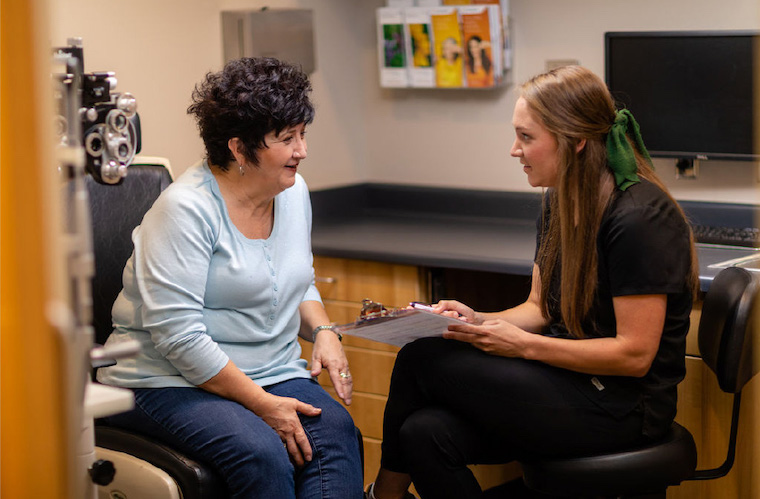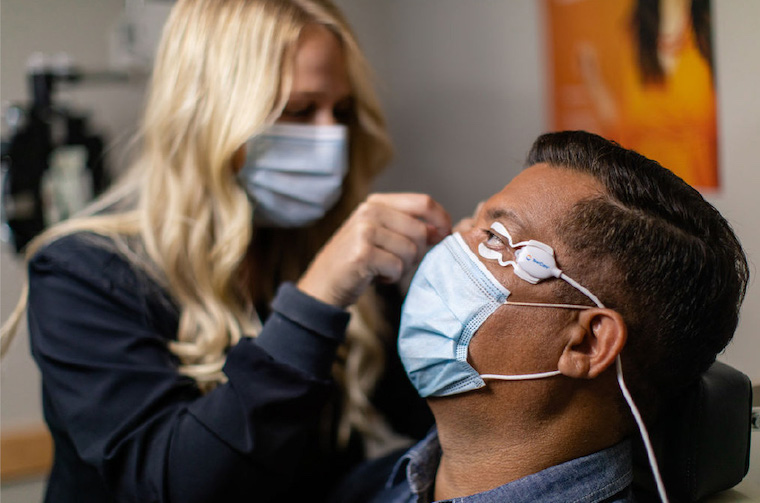Dry Eye Treatment
Find relief from dry, itchy, irritated eyes.

Dry eyes affect millions of people in the United States. It is estimated that as many as 4.88 million Americans over the age of 50 suffer from this uncomfortable condition.
If you need help, book an appointment at Cicero Family Eye Care. We’ll help you find a treatment option that brings you the relief you’re searching for.
What are the common symptoms of dry eye?
Everyone experiences dry eye differently because there are so many potential underlying causes.
Typical symptoms include:
- Redness or eyes that appear irritated and bloodshot
- Consistent burning or tingling sensations in the eyes
- Eyes that feel itchy or as if they have something in them
- Increased sensitivity to bright lights or sunlight
- Excessive tearing, or eyes that always appear watery
- Visual fluctuation
What causes dry eye?
Dry eye can be influenced by a number of factors related to the environment and health that determine tear quality.
Tears have 3 layers:
- a mucus layer,
- an aqueous (watery) layer, and
- a lipid (oily) layer.
If there’s an imbalance in these layers, your vision and comfort of your eyes may be affected. For example, if not enough lipid layer is being produced, tears may evaporate too quickly and cause symptoms ranging from discomfort to extra tear production and poor quality of vision.

Source: Craig JP, Nichols KK, Akpek EK, et al. TFOS DEWS II Definition and Classification Report. Ocul Surf. 2017;15(3):276-283. doi:10.1016/j.jtos.2017.05.008
In some cases, the cause is obvious, such as environmental irritants or short-term inflammation.
Some of the other causes of chronic dry eye problems include:
- Blepharitis
- Allergies
- Defects that affect the eyelid or shape of the eye
- Certain medications
- Abnormal eye pressure
- Deficiency of aqueous fluids
Because the underlying causes vary, treatment methods after diagnosis will also vary according to the patient. It is also not uncommon for there to be more than one cause for dry eye.
How is dry eye diagnosed and treated?
Through imaging of the meibomian glands, measuring osmolarity of the tear film, and screening for certain conditions, we are able to diagnose and provide treatment for the condition.
Some of the typical treatments include:
- Artificial tears and lubricant drops
- Prescription eye drops to combat inflammation
- Treating oil glands
- Blinking exercises or proper eyelid hygiene
- In-office obstruction removal with medical devices like The TearCare® System.
If an infection is causing the issue, low-dose antibiotics may also be prescribed.
What is TearCare®?

TearCare® is an innovative Dry Eye procedure that targets the blocked meibomian glands in your eyelids that produce oils to keep your tears healthy. When these glands become blocked or have reduced function, your tears may evaporate more quickly.
Unblocking these glands with The TearCare® System can help restore their function and stabilize the tear film. This may improve the quality of tears and reduce symptoms like dryness, gritty or scratchy sensations, blurry vision, and watery eyes.
At your appointment, we will determine whether your dry eye symptoms are caused by Meibomian Gland Dysfunction (MGD) and would benefit from the use of The TearCare® System.
Dry eyes are not only uncomfortable — they can also be bad for the health of your eyes. Book an appointment at Cicero Family Eye Care to find relief.
